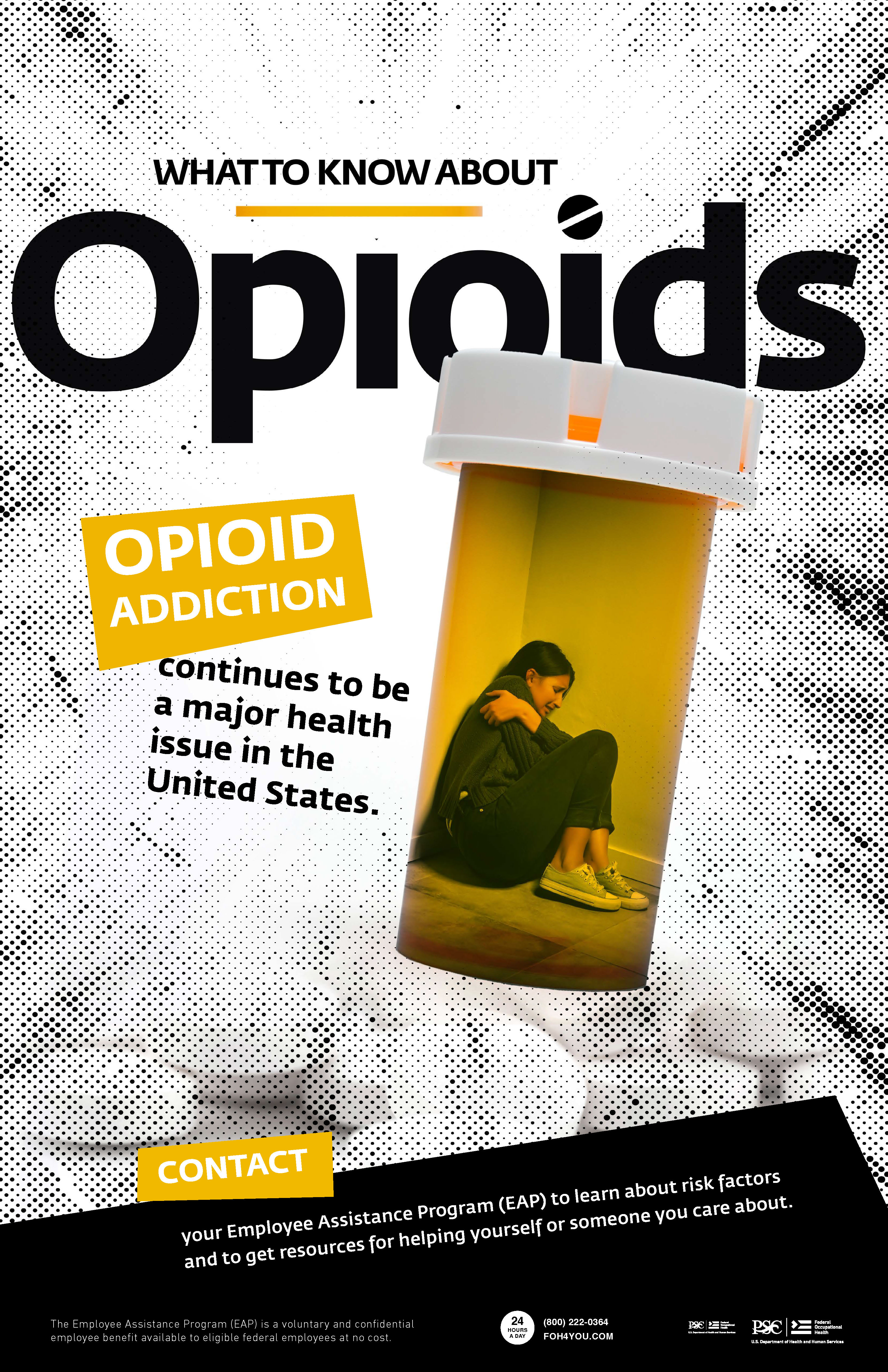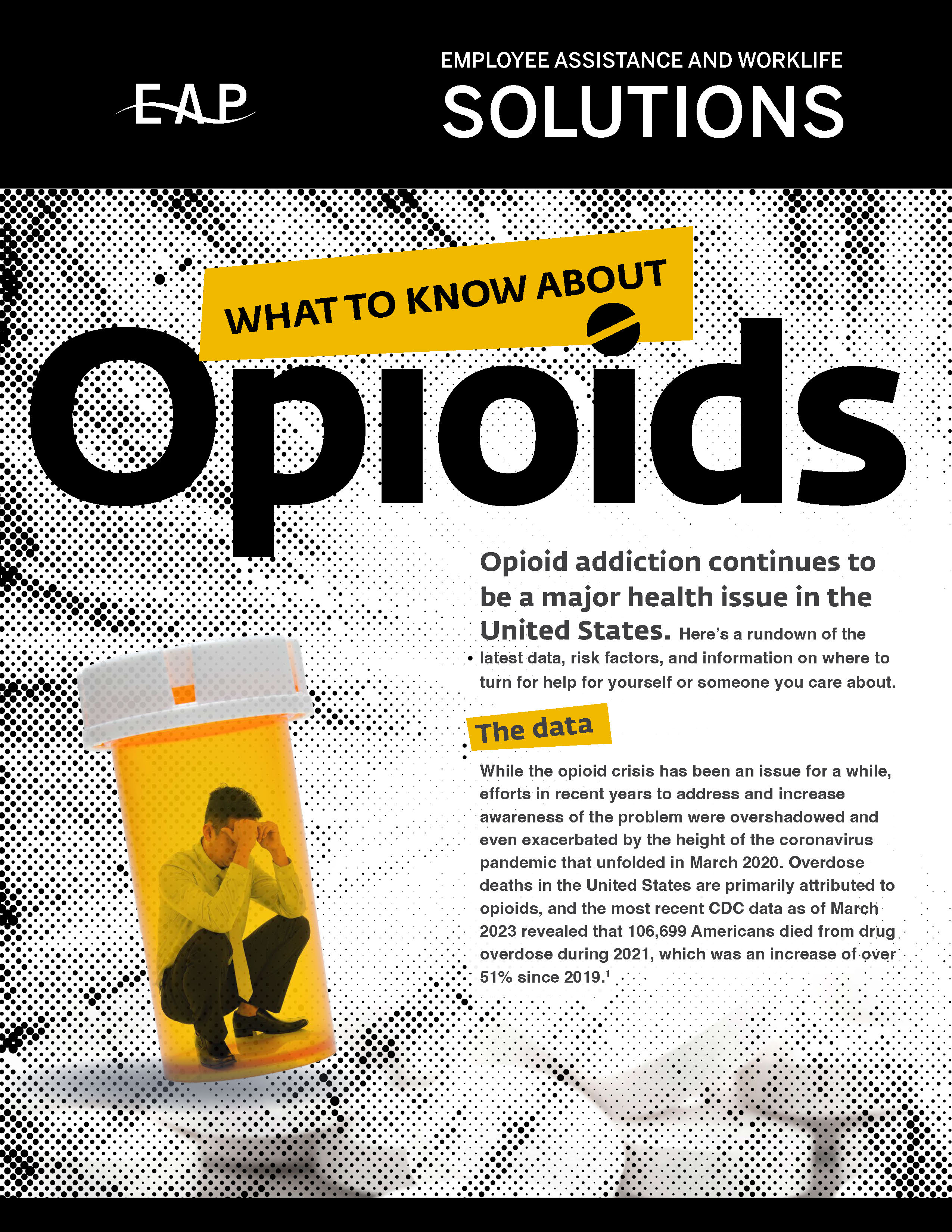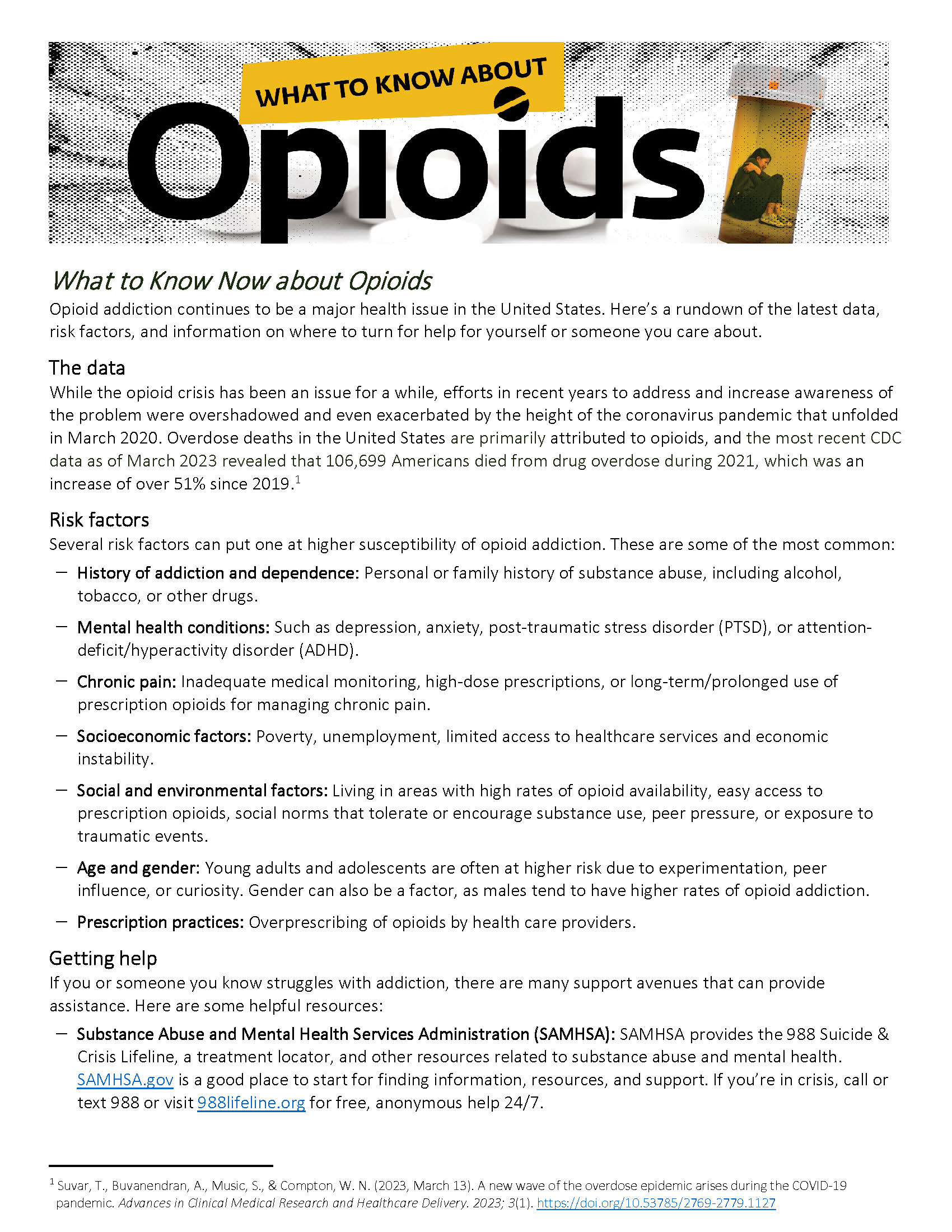
Opioid addiction continues to be a major health issue in the United States. Here’s a rundown of the latest data, risk factors, and information on where to turn for help for yourself or someone you care about.
The data
While the opioid crisis has been an issue for a while, efforts in recent years to address and increase awareness of the problem were overshadowed and even exacerbated by the height of the coronavirus pandemic that unfolded in March 2020. Overdose deaths in the United States are primarily attributed to opioids, and the most recent CDC data as of March 2023 revealed that 106,699 Americans died from drug overdose during 2021, which was an increase of over 51% since 2019.[1]
Risk factors
Several risk factors can put one at higher susceptibility to opioid addiction. These are some of the most common:
- History of addiction and dependence: Personal or family history of substance abuse, including alcohol, tobacco, or other drugs.
- Mental health conditions: Such as depression, anxiety, post-traumatic stress disorder (PTSD), or attention-deficit/hyperactivity disorder (ADHD).
- Chronic pain: Inadequate medical monitoring, high-dose prescriptions, or long-term/prolonged use of prescription opioids for managing chronic pain.
- Socioeconomic factors: Poverty, unemployment, limited access to healthcare services and economic instability.
- Social and environmental factors: Living in areas with high rates of opioid availability, easy access to prescription opioids, social norms that tolerate or encourage substance use, peer pressure, or exposure to traumatic events.
- Age and gender: Young adults and adolescents are often at higher risk due to experimentation, peer influence, or curiosity. Gender can also be a factor, as males tend to have higher rates of opioid addiction.
- Prescription practices: Overprescribing of opioids by health care providers.
Getting help
If you or someone you know struggles with addiction, there are many support avenues that can provide assistance. Here are some helpful resources:
- Substance Abuse and Mental Health Services Administration (SAMHSA): SAMHSA provides the 988 Suicide & Crisis Lifeline, a treatment locator, and other resources related to substance abuse and mental health. gov is a good place to start for finding information, resources, and support. If you’re in crisis, call or text 988 or visit 988lifeline.org for free, anonymous help 24/7.
- Local treatment facilities: Local addiction treatment centers, clinics, and hospitals often offer specialized programs and resources for individuals seeking help with opioid addiction.
- Support groups: Narcotics Anonymous (NA) and similar groups provide individuals in recovery from addiction with a safe space to receive support, guidance, and understanding.
- Mental health professionals: Consulting with psychiatrists, psychologists, and therapists can be beneficial for individuals struggling with opioid addiction and related mental health issues.
- Your Employee Assistance Program (EAP): The EAP is also available 24/7 for confidential help at no cost to you. Call any time, day or night, to speak with a consultant for information, resources, and support related to opioids and other addictions.
[1] Suvar, T., Buvanendran, A., Music, S., & Compton, W. N. (2023, March 13). A new wave of the overdose epidemic arises during the COVID-19 pandemic. Advances in Clinical Medical Research and Healthcare Delivery. 2023; 3(1). https://doi.org/10.53785/2769-2779.1127




